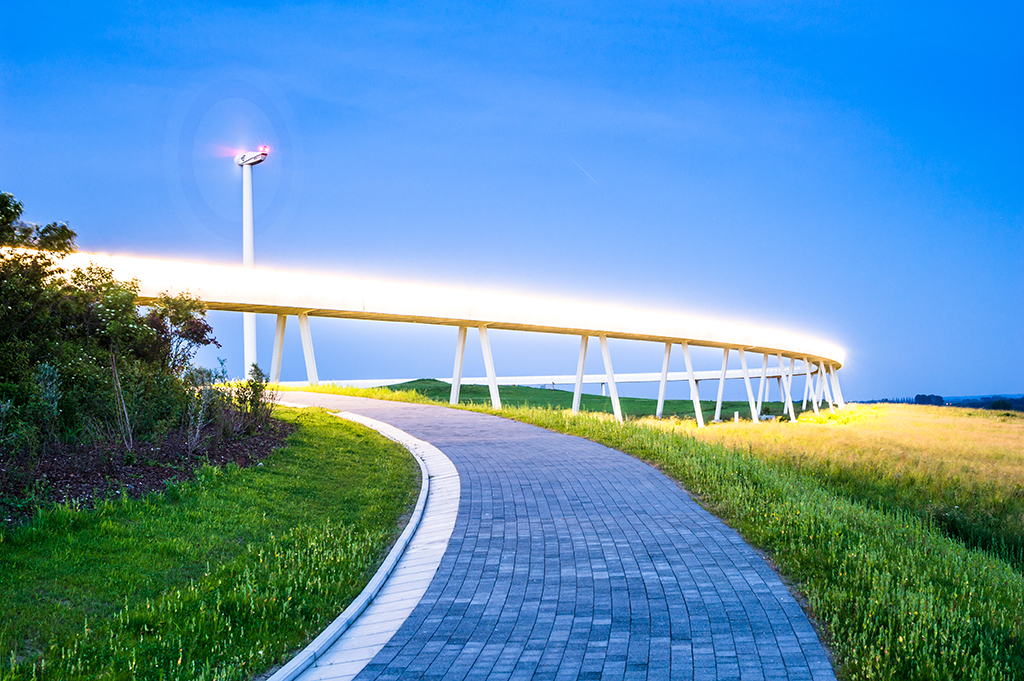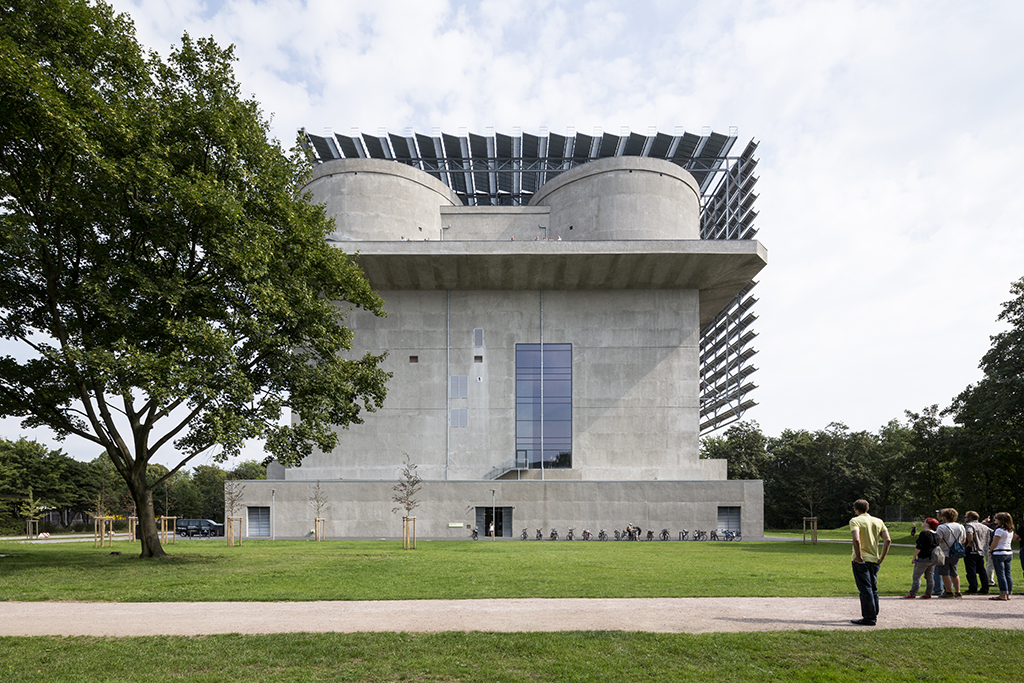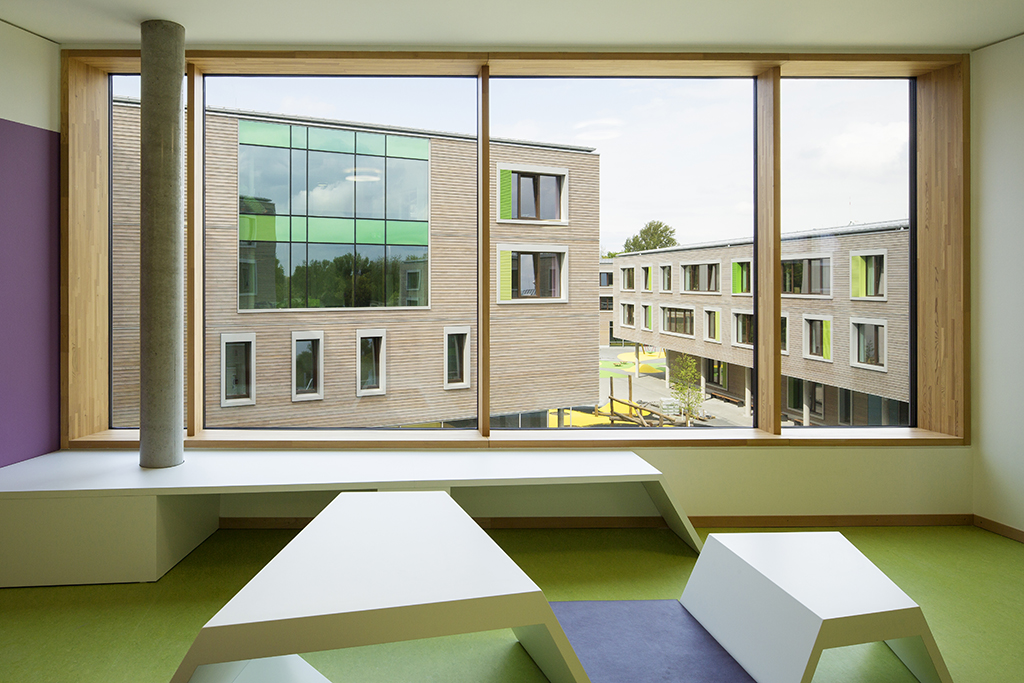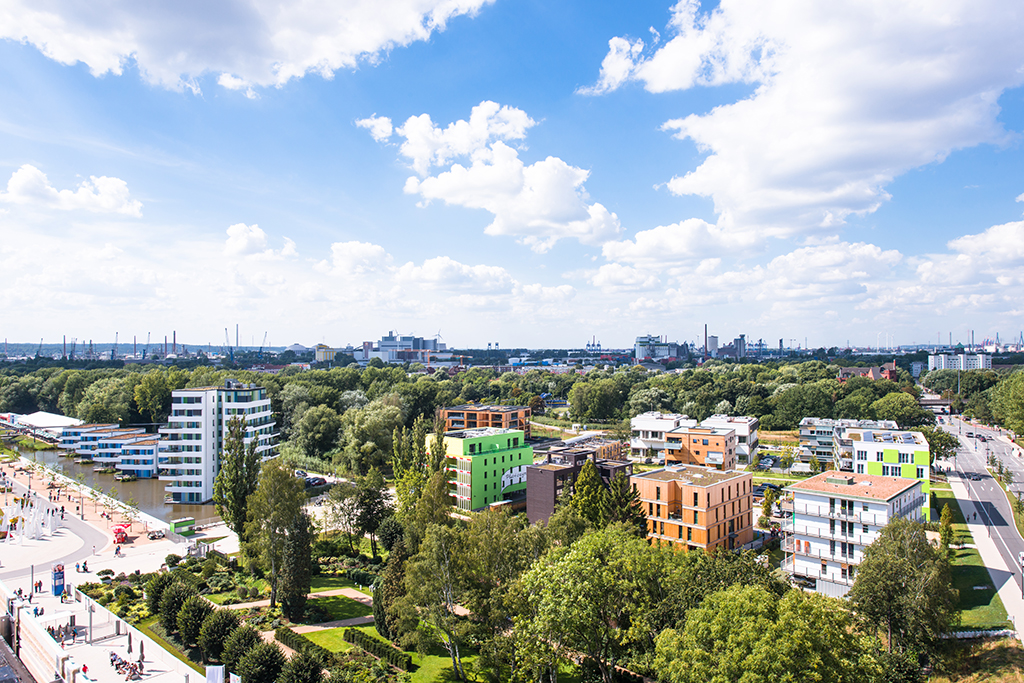The Free and Hanseatic City of Hamburg offers a model for the rebirth of city life in Europe. Nowadays, city-dwellers account for more than half of the world’s population. Not only are the megacities of Asia and South America booming – the metropolises of the “western world” are growing once more, after a long period of stagnating headcounts.
Since the 1980s the number of residents in Hamburg has been rising steadily and the population now totals more than 1.734 million. However, the city needs space to grow, above all in order to build new houses. But in future the vital resource will no longer be redevelopment/brownfield sites but those areas where the city can be restructured – unless, of course, we are prepared to accept a new wave of suburbanization.
International Building Exhibition (IBA) Hamburg
A good ten years ago, it was against this backdrop that the Elbe Islands moved centre stage to command the attention of Hamburg’s town planners. Ever since Schumacher’s “feather fan model” of 1920, Hamburg’s Elbe Islands have been marked down as port and working district, although even then it was home to tens of thousands. The general public and government bodies took notice of the Elbe Islands only when sensationalist headlines made it sound as if the district were turning into Hamburg’s no-go area. That did not change until 2003 and the city’s Olympic bid, which focussed media interest on Kleine Grasbrook, the northernmost of the Elbe Islands. Although the bid failed, this new-found interest led to a realignment of overall town planning and Hamburg’s decision to dare to “leap across the Elbe”. Since then the centrally located Elbe Islands of Wilhelmsburg and Veddel have represented a crucial stepping stone between HafenCity in the north and Harburg in the south.
We want Hamburg to grow here, in a central location. In 2006 an intensive public review process culminated in the founding of the Internationale Bauaustellung IBA Hamburg GmbH whose task was to develop projects and strategies addressing current topics of interest in international town planning circles and aiming to “Build the City Anew”.
International Building Exhibitions in Germany
IBA Hamburg thus takes its place in a great tradition of international building exhibitions in Germany dedicated to town planning and architectural issues. Building exhibitions have always focussed on the core urban and social issues of their day, making a greater contribution to society than just showcasing buildings and architecture. Building exhibitions trace their origins to Darmstadt in 1901 and the new aesthetic of a “life reform movement”, and to the modernist housing reformation of the 1920s; after the Second World War the exhibitions were increasingly refined and used to drive urban development.
The IBA Hamburg Area
For more than 500 years, generations of marshland farmers have wrested Wilhelmsburg from the waters of the Elbe and defended their land against spring tides from the North Sea. Originally, the archipelago consisted of almost two dozen low islands which merged into “Europe’s biggest river island” when the circular dyke was completed in the mid 19th century – a defence that could, however, fail, as was devastatingly revealed in the Great Flood of 1962. People have not forgotten the many lives claimed by this disaster and the residents of Wilhelmsburg are more keenly aware of the dangers of climate change than most.
IBA Hamburg’s Three Key Themes
Cities And Climate Change – New Energies for the City
On the Elbe Islands, therefore, the subject of “Cities and Climate Change – new energies for the city” needed no special introduction because it was already on the agenda, and had been since February 2007 at the latest, when the 4th IPCC report was published. Considering that cities produce 80% of all CO2 emissions and an end to the urbanization of our planet is not in sight, no exhibition dealing with building and urban development can afford to ignore the issues of climate change and climate protection.
The strategic concept “Renewable Wilhelmsburg” offers the first road map towards a climate-neutral urban district which can supply its own energy in a closed-loop system. The idea is that by 2030 households, industry, trade and services will produce all their own electricity and become self-sufficient in heating by 2050. Now, in 2013, thanks to the projects that have already been completed, Wilhelmsburg is the most climate friendly district in Hamburg and is perhaps ahead of all quarters in other major German cities. For these reasons IBA Hamburg has subscribed to climate-protecting construction methods and the development of local, renewable energies. For example, the wind turbines on the former landfill site Georgswerder were “repowered”, i.e. their output increased, and a supplementary photovoltaic system was installed. A one-time flak bunker, its outer shell still standing as a reminder of the Second World War, has been converted into an “Energy Bunker” with the help of solar collectors and a gigantic water storage tank.
 Georgswerder Energy Hill: landfill and energy source, visitor information point and viewing platform.
Georgswerder Energy Hill: landfill and energy source, visitor information point and viewing platform.
 Energy Bunker: a war relic becomes a power station and energy reservoir.
Energy Bunker: a war relic becomes a power station and energy reservoir.
COSMOPOLIS – New Opportunities for the City
The second major theme for this IBA, “Cosmpolis – new opportunities for the city”, addresses a serious problem in our cities: the diminishing ability to achieve social integration due to growing segregation along social and economic lines and the cultural isolation of various groups and social strata. IBA Hamburg is therefore concerned with urban inclusion strategies that reach out to people from all kinds of background, culture and economic status. Infamous as a socially deprived area for many years, Wilhelmsburg is now the scene of innovative education, culture and housing projects. With eight new educational facilities and numerous initiatives directed at improving general welfare such as the Elbe Islands Education Drive, education is the pivot of an enhancement process designed to benefit everyone – people already living there and those who, so it is hoped, will want to move there.
“To enhance but not to displace” and “Residents want to stay!” are two fundamental principles for this IBA: citizen participation projects as practised in the “Global Neighbourhood” housing estate or in long-stigmatized Georgswerder district help IBA Hamburg to enact a policy of preserving social structures. The principal beneficiaries of IBA’s culturally specific infrastructure projects such as the Veringeck intercultural senior citizens’ residential and care facility, or the “World Commercial Park” for small and one-man businesses, are the people already living in Wilhelmsburg.
 Gateway to the World Education Centre: a community centre where local people can learn and meet.
Gateway to the World Education Centre: a community centre where local people can learn and meet.
METROZONES – New Spaces for the City
The third key theme of IBA Hamburg puts a name to an awkward situation: METROZONES – new spaces for the city. Few places offer such a diversity of built-up and rural space, of buildings whose architecture and intention speak of so many different epochs, cultures and nationalities, all crammed onto a space of about 35 km². These “Metrozones” are the physical space in which the building exhibition and its projects are situated. In this age of the renaissance of cities, the true resources from which cities can derive fresh growth are their inner peripheries, over-sized infrastructure facilities and commercial parks, abandoned railway freight terminals and landfills etc. Here, not in the prettified streets of buildings from a more genteel age, is where the city of tomorrow will arise. And so it was in the neglected inner peripheries of the city that IBA Hamburg chose to demonstrate how new, revitalized, liveable districts can be created.
The centrepiece of IBA’s plans for the Metrozone is the Wilhelmsburg Mitte (Wilhelmsburg Centre) project, its largest new building area and IBA showcase for 2013. One important component is the “Building Exhibition within the Building Exhibition” presenting “model homes for the 21st century” with innovative solutions for aesthetically ambitious and at the same time cost-effective, adaptable and sustainable buildings. The new centre of Wilhelmsburg (Wilhelmsburg Mitte) not only borders on what will be a “New Style Public Park” created by the International Garden Show Hamburg 2013 (igs 2013) but it also combines with the latter to form a central point of departure for future development of the district.
Any planning approach to develop the “Metrozones” calls for a holistic strategy which must be formed in cooperation with the local residents. Restructuring the city is not only a huge opportunity to free up space for new urban growth, it also offers a unique chance to anchor new urban, environmental qualities and combine them with education, work training, jobs and income in previously neglected areas of the city.
 Wilhelmsburg Centre showing the model houses for the 21st century.
Wilhelmsburg Centre showing the model houses for the 21st century.
Long-lasting Impetus for City Development
Upon reaching its presentation year in 2013, IBA Hamburg had already developed and completed more than 60 projects. Some projects were still under construction in 2013 and others, such as the “Renewable Wilhelmsburg” climate protection concept have been planned for the long-term and still have several years to go before full implementation. By the end of 2013 IBA Hamburg will count a total of 1,724 apartments under construction or completed, of which 516 are modernizations. Added to this tally are more than 100,000 m² of commercial space, eight education facilities, two senior citizens’ residences and nursing homes, three children’s day-care centres, four sports facilities, a small-business commercial park, a centre for artists and creative people, the extension of a canal and more than 70 hectares of parks and gardens.
With an overall potential of 5,500 residential units and about 290,000 m² of commercial space, Wilhelmsburg is currently Hamburg’s largest urban development area and the biggest reservoir of space for urgently needed house-building. Nowhere else in Hamburg is the infrastructure – the new igs park, IBA school projects and new sports facilities – so well able to support a process of building the city anew. The investments in innovative projects in Wilhelmsburg Mitte and in model energy-efficiency schemes set the stage for further unique, innovative urban development. Hamburg’s Elbe Islands thus have the chance to become one of the most dynamic and innovative districts in Hamburg. We must seize this opportunity to build the city anew.
Head Image: IBA project area on Hamburg’s Elbe Islands of Wilhelmsburg and Veddel plus Harburg upriver port.